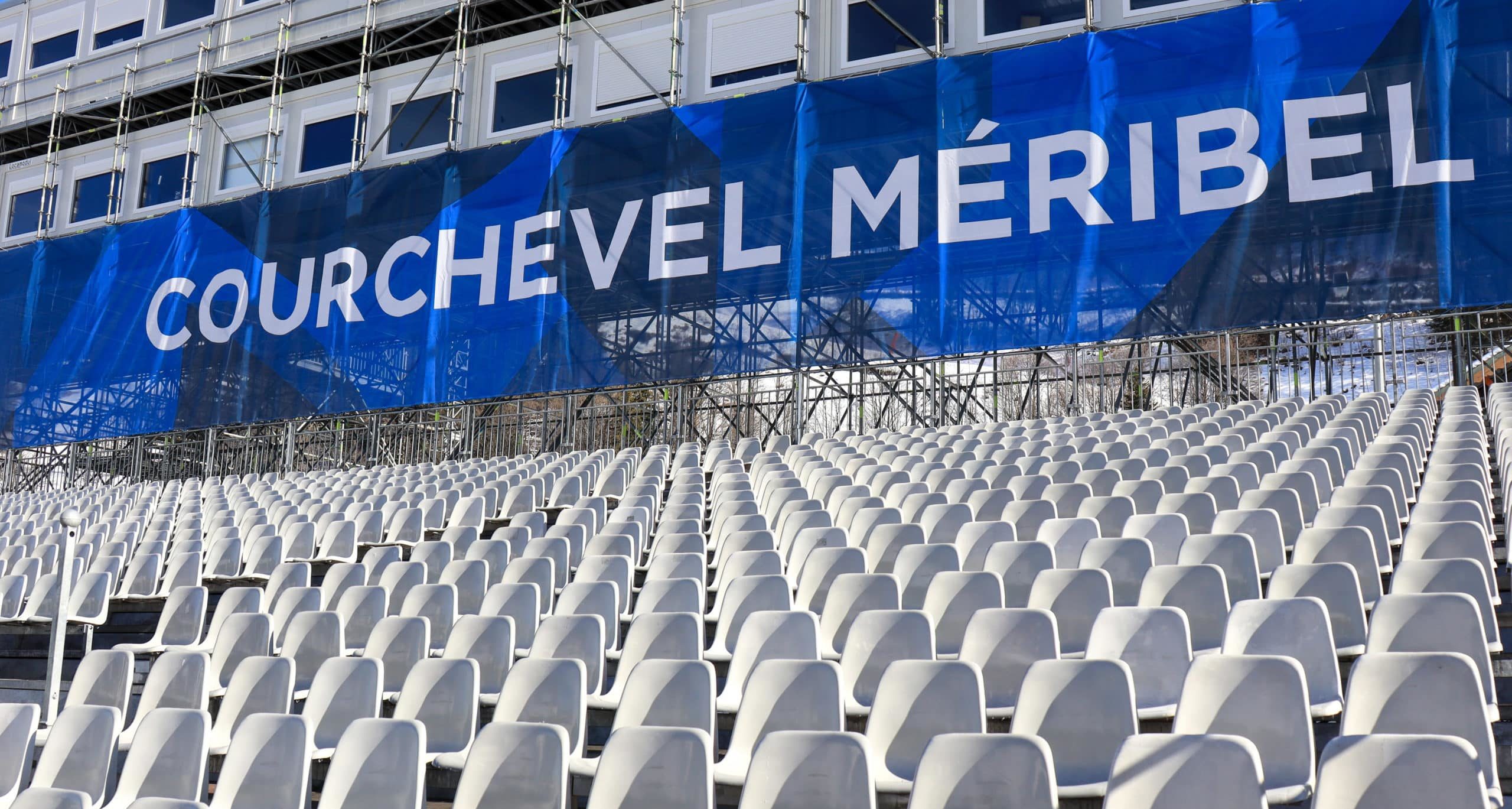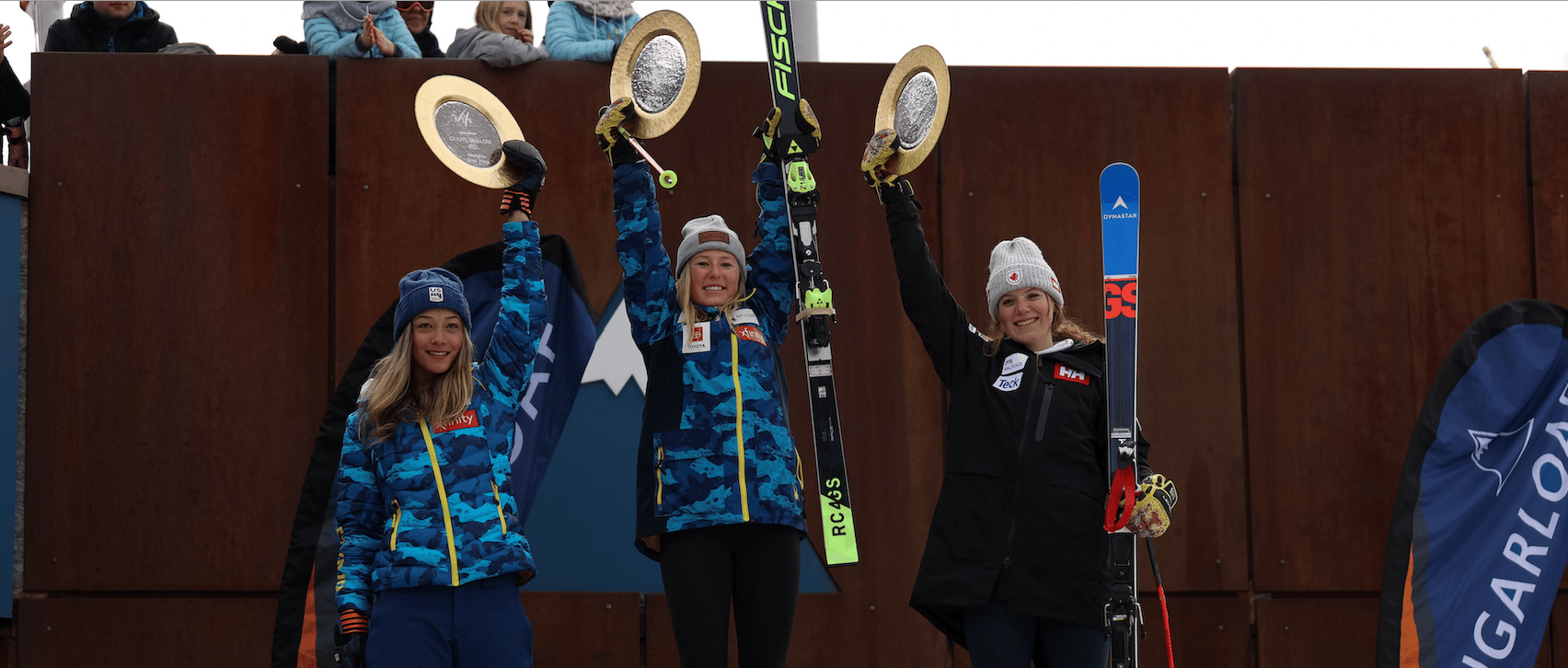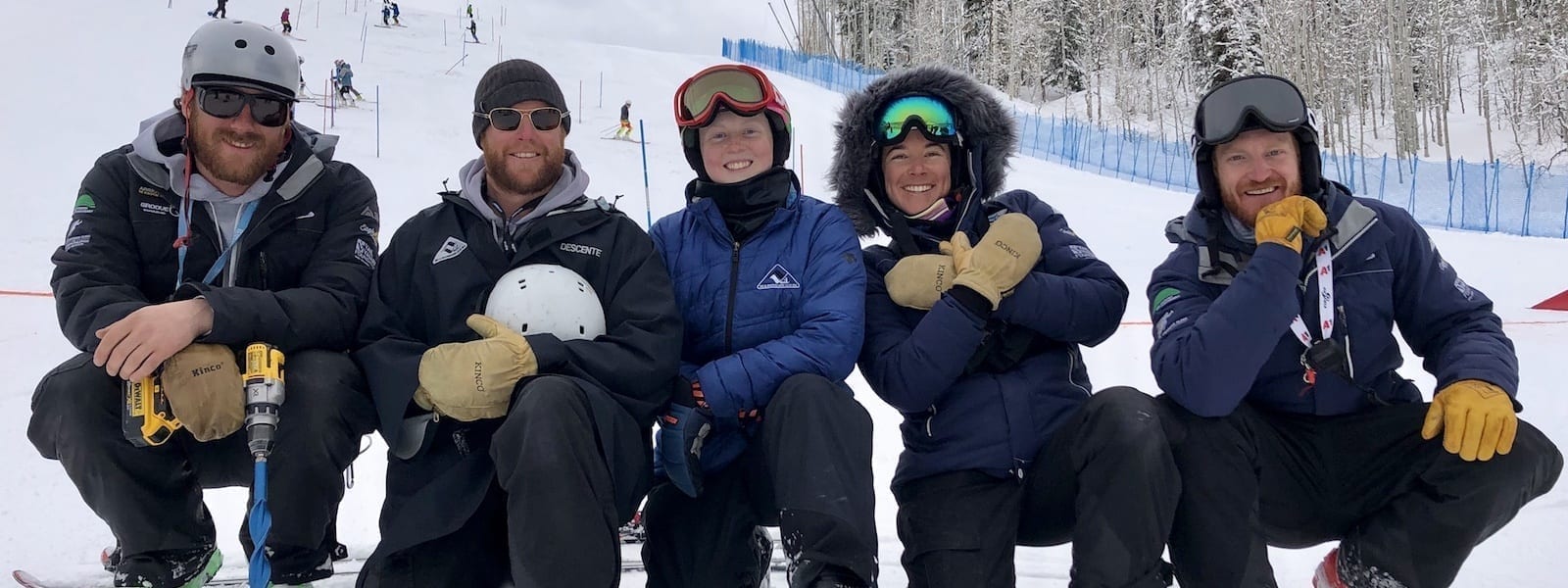World Cup openers important in many ways
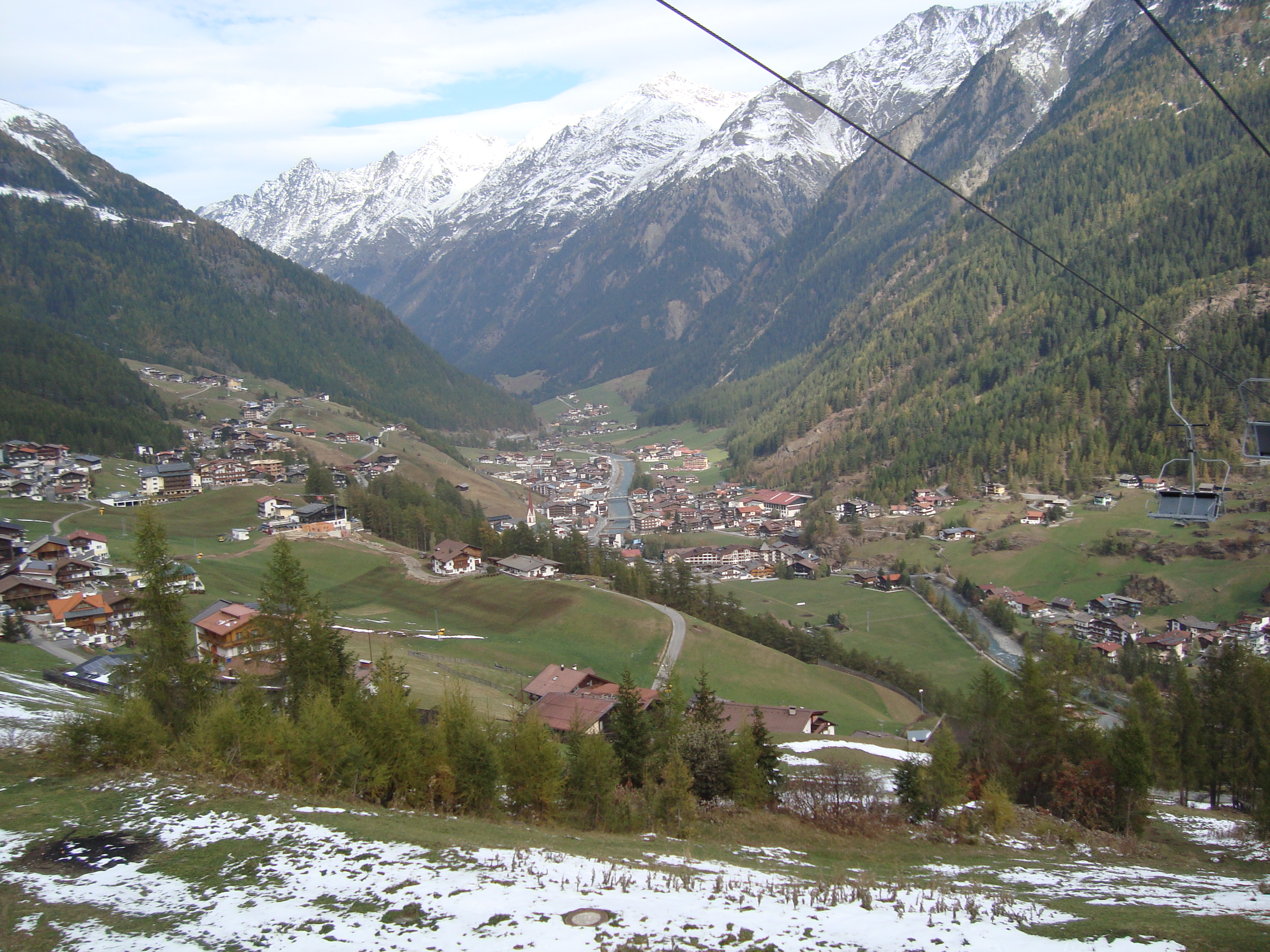
It has become tradition: Saturday (for the women) and Sunday (for the men) Soelden, Austria opens the 2010 World Cup just as it has in eight of the last nine years and 10 times since 1996.
There have been 22 World Cup races, all giant slaloms and all in October, held on the glacier above Soelden. The inaugural event was held in 1993 and it has been the anchor of the annual schedule since 2000.
Some skiers seem to possess the abilities to win on the steep flanks. Thanks to a remarkable three way tie for the win in 2002, the women have two more winners listed, but it is still Hermann Maier with three wins who has demonstrated the most control over the piste of the Rettenbach Glacier. Martina Ertl, Andrine Flemmen, Tina Maze and Bode Miller have each won the race twice. This knowledge doesn’t make it any easier to handicap the races this season. Of them all, Slovene Maze is the one expected to race.
Soelden is located up a high mountain valley. The town has an economy based on skiing tourism, making these openers critically important. The races bring media attention and that serves to remind folks the season has arrived and reassures the drive to Soelden will be rewarded. News of cancellations, such as in October 2006, has a contrary effect and that is economically felt all season.
The town of Soelden has a narrow footprint and one main road. That works well for a village of less than 4,000 inhabitants. But it fills up pretty easy and an annual crowd over 10,000 spectators puts it into the overfull range. Race weekend Soelden is packed. It can be a rowdy bunch. Like some NFL stadium crowds have reputations, so too does each World Cup site. Soelden’s leans toward the, shall we say, spirited side.
Enough fan clubs attend in force to assure some fraction will be in celebratory mode. Others just join in. Win or lose, it’s still the opening weekend for ski race fans that have had to endure the summer months.
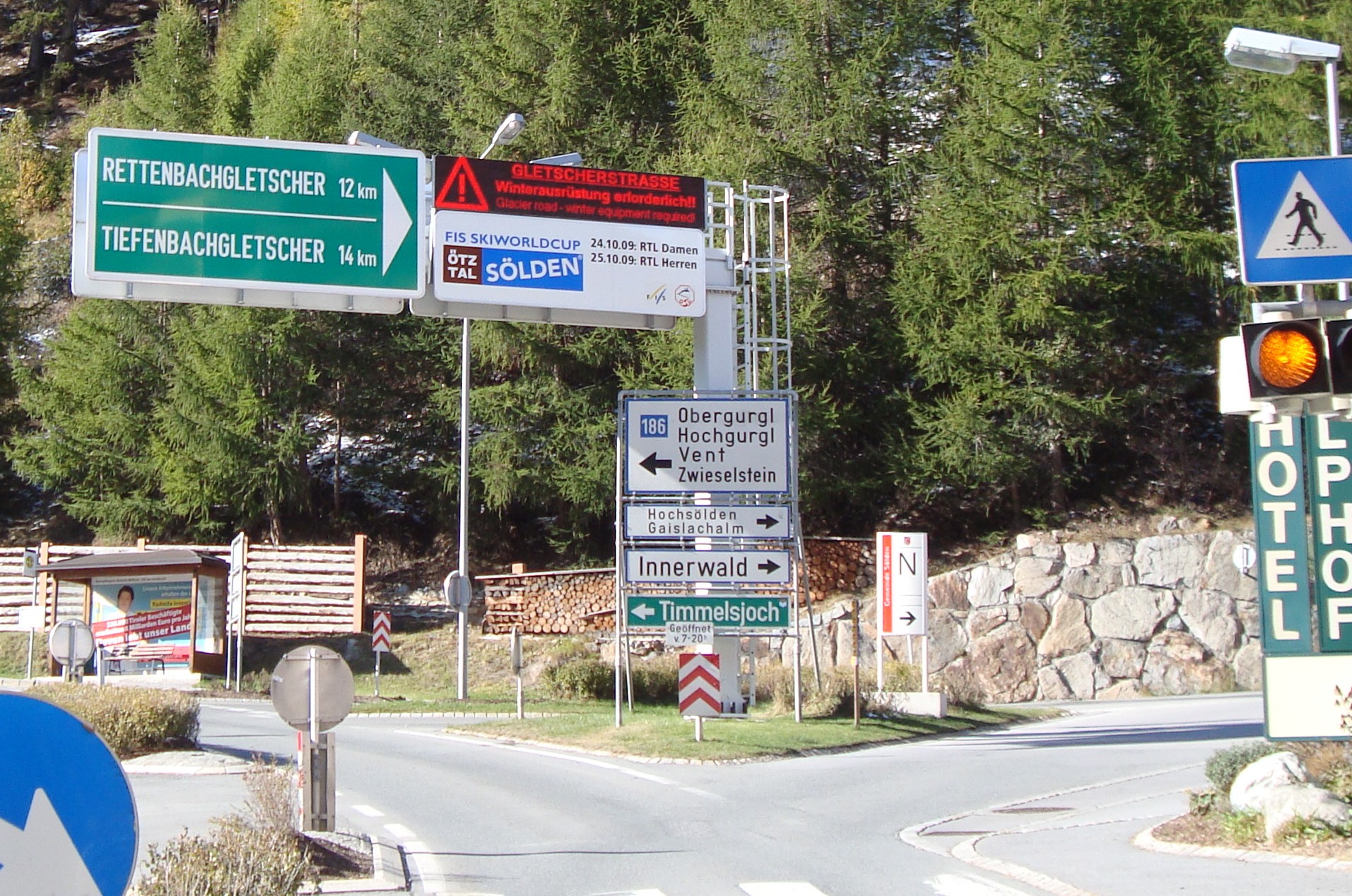
No one seems to mind any of this.
In terms of its importance to the World Cup it is difficult to underestimate Soelden. The full array of support and supply personnel attend in force. There are dozens of press conferences to make sure the media is up to speed on any sponsorship changes during the off-season. Off snow it may be the most important race of the World Cup season. And, history shows, what happens on the snow at Soelden also matters.
Soelden is among the tougher courses, particularly for the women, on the circuit. Being the first race of the season only compounds the difficulty. Those who do well at Soelden, often translate that through the season.
Last season the men’s race 1-2-3 went to Daniel Albrecht, Didier Cuche and Ted Ligety. The women’s to Kathrin Zettel (with a broken nose), Tanja Poutiainen and Andrea Fischbacher. The final GS standings were not duplicates but there were plenty of similarities: Cuche, Benjamin Raich and Ligety; Poutiainen, Zettel and Maze. The average percent is a little lower than that over the last five seasons but you get the point.
The site has also been rather unkind to some racers, most notably, Raich. There is no doubting his GS prowess. He has 14 World Cup GS wins at eight different sites and an Olympic GS win at another. He has GS podium appearances in 30 World Cups but has never cracked the top three at Soelden in eight tries. He has been fourth the last three times it’s been held and he’s made the top three of the final GS standings in all of those years. But for the apparent jinx at Soelden, he has to be considered a favorite.
Which brings us to the process of handicapping the races. Among the women we have to consider Maze, Zettel and Poutiainen on history alone. The returning (from injury) Nicole Hosp offers a tempting alternative. Elisabeth Goergl and perhaps Manuela Moelgg should also be mentioned. As for U.S. chances… the last three Americans to win a women’s World Cup GS were Julie Parisien, Diann Roffe and Tamara McKinney. The most recent of those was 1991. Julia Mancuso is the defending Olympic GS gold medalist and Lindsay Vonn has a string of top 10’s in the discipline, but frankly an American getting the win here would have to be considered an upset.
Americans will look to the men’s race with more anticipation. Among the men our man Ligety makes everybody’s short list of favorites, including the guy behind the counter at the local pizzeria that supplies his mid-race snack. Last year’s men’s winner, Albrecht, after his devastating injury last season, won’t be competing until November at the earliest and three time winner Maier just announced his retirement. Cuche, second here a year ago and the defending GS champ, has to make the short list. Others to consider by virtue of past performances at Soelden should be Kalle Palander or maybe Manfred Moelgg. It would be wise to include defending overall champ Aksel Svindal as well. A year ago he was coming off a severe injury himself and making his first competitive turns in nearly a full year and placed 13th. The season before, he won it. Add the aforementioned Raich as well. No jinx lasts forever.
Whatever the actual outcomes, the 2010 World Cup season will be underway. For racing fans that remains the primary consideration. For Soelden it means a bit more.
Images by Hank McKee
